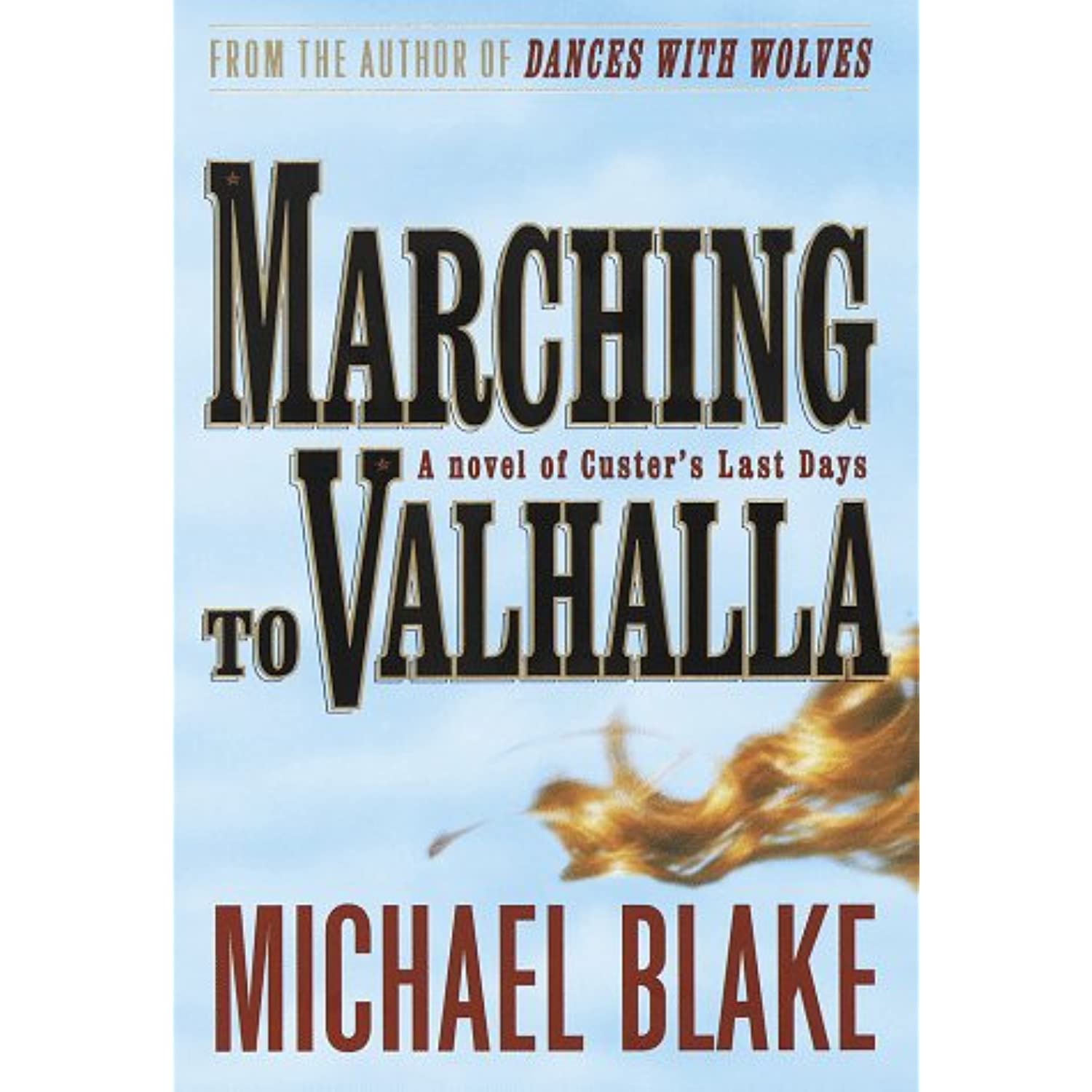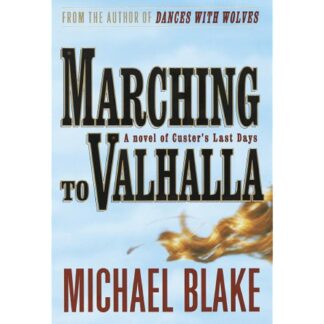Description
Product Description
The author of Dances With Wolves turns his creativity and imagination toward America’s doomed romantic hero, George Armstrong Custer–the youngest general of the Civil War, trailblazer, Indian hunter, passionate lover, obsessive husband, and tormented, guilt-ridden soul. A wonderful merger of fact and fiction, Marching to Valhalla is soon to be a major motion picture starring Brad Pitt.
From Publishers Weekly
The author of Dances with Wolves returns to the Old West for a startling novel about this year’s most popular literary subject, the inimitable George Armstrong Custer, focus to date of at least four novels and three nonfiction books. Every author has his own Custer, and Blake’s is wholly unexpected: not a glory-hungry martinet but a rational man and passionate romantic. Blake’s approach is refreshing. He presents Custer by imagining the general’s journals, written during the last seven weeks of his life, from May 18, 1876 to the morning of June 25, 1876, date of the Battle of the Little Bighorn. As he pursues the Sioux, Custer reveals his private thoughts about the military, his Indian opponents, his plans for the upcoming battle and his destiny. He also ventures at length into his past, making it clear that, although “I have always aspired to greatness,” it was his remarkable battlefield achievements in the Civil War, as well as his ardent love for his wife, Libbie, that proved key to his later military successes and his popularity with the public. He also coolly explains his court martial conviction and his sordid affair with a young Indian woman. Though revisionist in its sympathy for Custer, the narrative seems rigorously authentic in its period detail, down to the flowery nature of Custer’s prose. Blake’s fascinating tale may not convince readers that its hero was a paragon of humanity, but it likely will persuade many that, for all his faults, Custer was a warrior who died with his boots on. 100,000 first printing; major ad/promo; film rights sold to New Line Cinema with Brad Pitt scheduled to play Custer; simultaneous Random House audio; author tour; foreign rights sold in Japan, Germany and England.
Copyright 1996 Reed Business Information, Inc.
From Library Journal
Two new biographies of General Custer, a newly discovered personal account by one of his troopers, and a novel about The Battle of the Little Bighorn have already been published this year, and now we have this novel by the author of Dances with Wolves (Fawcett, 1988). Surprisingly, it is a sympathetic portrait, cast in the form of a journal Custer supposedly kept during the last weeks of his life. In it, he recalls scenes from his days as a cadet at West Point, the battles he fought as the youngest federal general in the Civil War, his courtship of and marriage to Elizabeth Bacon, his first campaign against the plains Indians and his subsequent court martial, and his destruction of a Cheyenne village beside the Washita River. Blake gives us a convincing and well-rounded portrait of Custer the man, but some readers may feel gypped that he concludes his novel before Custer fights his final and most famous battle. For most fiction collections.
-?Charles Michaud, Turner Free Lib., Randolph, Mass.
Copyright 1996 Reed Business Information, Inc.
From Booklist
Blake, the author of
Dances with Wolves (1991), conjures up a reflective George Armstrong Custer, one who in 1876 looks back on the many controversial events of his life and defends himself in each case, with the exception of the Little Big Horn, in a journal. Blake may not be overextending his imagination, for Custer could well have been motivated to keep such a journal, having meddled in politics earlier that year. So this Custer sets to writing his memoir, framed by the day-by-day chronicle of his command’s date with doom, better known as Sitting Bull and Crazy Horse. Even up to that point, Custer had a store of reminiscences: the Civil Wa






Reviews
There are no reviews yet.